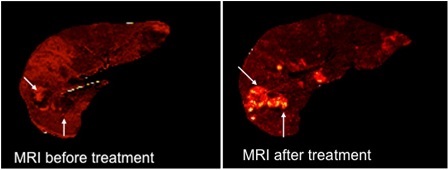Apr 25 2014
Over the next few years, the University Medical Center (UMC) Utrecht and Quirem Medical will be working closely together to maximize the benefits of using holmium microspheres to treat liver cancer patients worldwide. The unique properties of holmium microspheres will enable effective treatment planning, dosimetry en treatment evaluation, thereby further improving the results of patients who undergo radioembolization.
The collaboration will cover ongoing and future clinical research, grant applications, the production of holmium microspheres and the application for CE marking. Financial details of the deal were not disclosed.
Image-guided radioembolization of liver tumors
Holmium microspheres are unique in that they can easily be seen on either a SPECT or an MRI scan, allowing the doctor to establish whether the microspheres are doing their work in the right place in the body. There are two stages to a treatment using holmium microspheres. Administering a safe low dosage first, the doctor ascertains whether the radioactivity is accumulating properly in the liver. If it is, a higher dosage is administered. Holmium treatment is currently only applied in a palliative care setting.
Clinical research
The results of a phase I clinical study (HEPAR I) were published in Lancet Oncology in 2012. As part of that study, UMC Utrecht researchers treated 15 patients and found that the treatment was safe. A clinical study (the HEPAR II study) one the effectiveness and to collect further support for the safety of the treatment is currently ongoing. This study will see 40 new patients being treated at UMC Utrecht.
Prof. Maurice van den Bosch, an interventional radiologist at UMC Utrecht, says, “To transform academic research in medicine from new and exciting ideas into innovations that can make a real difference to how we treat patients requires the long and firm commitment of both public and private partners. In Quirem Medical we have found a strong and dedicated partner that will further expedite the use of our research efforts in the field of minimally invasive, image-guided cancer treatments.”
Jan Sigger, CEO of Quirem Medical, adds, “We are very pleased to have UMC Utrecht as our collaboration partner for the further development of the holmium radioembolization procedure. UMC Utrecht’s strong imaging and interventional capabilities are very much in line with the options that QuiremSpheres® can provide to improve the effectiveness of the radioembolization procedure and, as a result, patient outcome.”